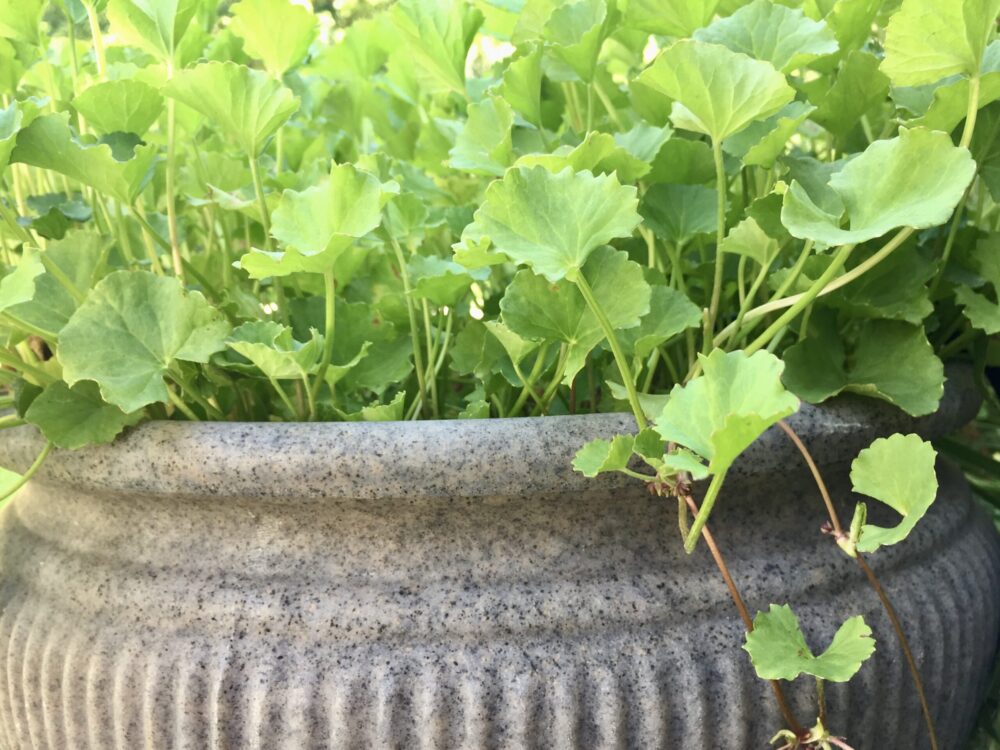The Herb of Enlightenment and Connectivity ~
If you've attended a class or watched a video of me during the colder months, you may have noticed large pots of gotu kola on the sill behind my teaching table, taking refuge from the chill. Gotu kola would much prefer its native lands in India where it grows as a creeping vine in dappled sun. Here in the northeast, it’s a more persnickety plant than I would normally fuss with as an indoor plant, but gotu kola is worth it.
Key Medicinal Attributes
Possible Adaptogen
In spite of its lack of winter hardiness (I am in zone 4 in New Hampshire, half a planet away from gotu kola's preferred native lands) and desire for intense soil nutrition and moisture, gotu kola is among the easier (possible) adaptogens to grow and harvest. Adaptogens are a broad class of herbs that support the body in a variety of ways, most notably improving the way we respond to stress. Adaptogens bring the nervous and endocrine systems into a state of better balance and generally promote energy. Many of our most famous adaptogens are the roots of slow-growing perennial plants from mountains and harsh climates such as ginseng, rhodiola, eleuthero, and maca. These can be difficult, sometimes impossible, to grow and harvest in any useful quantity. From India, however, we get some tonic adaptogens that are a little more easy-going to grow and offer medicine in their above ground parts. Holy basil and gotu kola top my list, though, you could debate whether or not gotu kola truly possesses adaptogenic effects - it's definitely more gentle and subtle than the rest when it comes to anti-stress and energizing effects.
Gotu kola deserves some fuss. As a possible adaptogen, it does indeed support the stress response when taken regularly. But all of our adaptogens do this. One of the things I like to look at when choosing which adaptogenic herb to use is its side benefits. I put gotu kola in the category of a calming and balancing adaptogen (in contrast to the zippier ones like rhodiola and ginseng). Much like holy basil and ashwagandha, gotu kola improves energy while promoting calm and relieving anxiety and supporting folks with attention deficit/hyperactivity disorder (ADHD). However, it also has some unique properties.
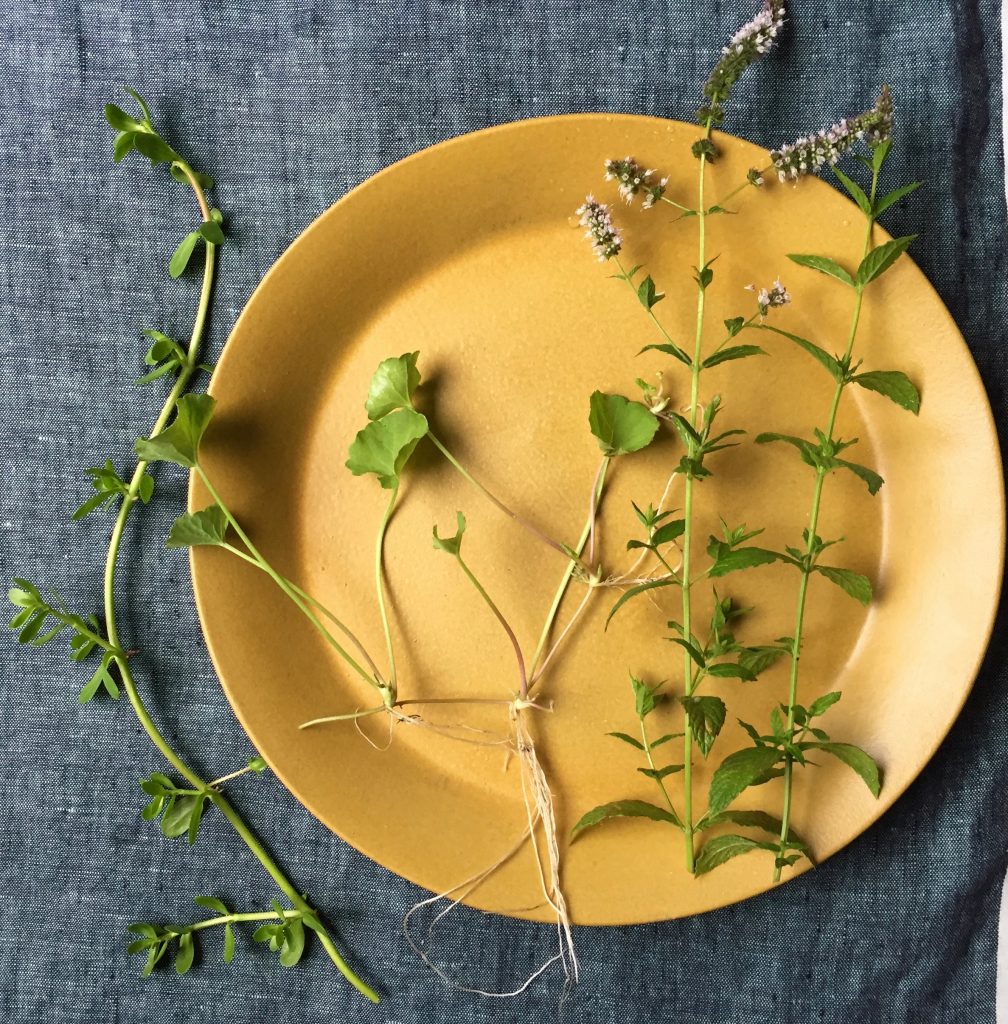
Cognitive & Nerve Support
Gotu kola has gained a greater reputation in Ayurveda and herbal medicine for its ability to enhance brain function than for stress. Folk stories tell us that elephants don’t forget because they eat lots of gotu kola. Old Sanskrit texts credit regular consumption of gotu kola juice (also called brahmi and pennywort) with near-miraculous cognitive benefits including photographic memory. Preliminary studies support many of the traditional claims and have determined that gotu kola improves mitochondrial function and acts as a neuroprotective, nootropic (smart drug), antioxidant, and anti-inflammatory, encourages nerve regeneration, and lessens beta amyloid plaque’s negative effects.
Though only a few human studies have been done, the herb has a long history of use as well as many supportive preliminary studies. In clinical studies, working memory and mood improved for elders who took 750 mg of gotu kola extract daily, mentally retarded children showed better memory and overall mental ability, and healthy adults had a reduced startle response to loud noises.
Collagen, Connective Tissue & Vascular Vitality & Vulnerary Support
Gotu kola also supports circulation, wound healing, and connective tissue vitality. There's much more research on these benefits, and the effects tend to be faster than for the prior benefits, in my experience. Not only does it improve blood flow but it also improves the strength, flexibility, and lining of capillaries and blood vessels. It improves collagen synthesis, wound and bone healing, and connective tissue vitality. it's a stellar "vulnerary" herb, that is, an herb for healing tissues after wounds and injury I use it topically and internally for clients with injuries in need of repair. This can range from simple wounds and scar healing/prevention to varicose veins, vascular insufficiency, stretch marks, aging skin, leaky gut, ulcers, brain injury, after strokes, for gingivitis and gum health, post-surgery, and for general cardiovascular health. Consider remedy formats that allow it to have direct contact with the tissues in need of support, as well as internal systemic use benefits.
Sloooow and Gentle, Yet Profound
Gotu kola tends to be a slow, tonic plant that gradually accumulates and shows benefit in the body. You probably won’t notice much from one cup of tea, but give it time. One or two months later, you might be surprised by how much things improve!
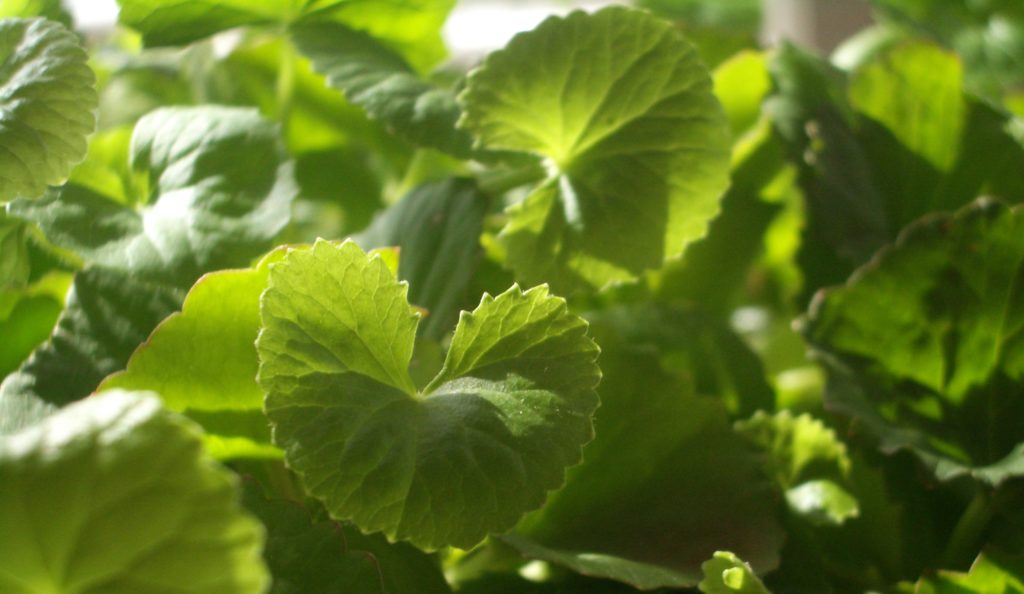
Food and Medicine
Gotu kola is also called brahmi (but so is bacopa), pennywort, and centella, among other names. It's a popular food-as-medicine plant throughout Southeast Asia and other areas in which it grows or has been adopted. Several folks I've met from Sri Lanka are excited to hear that I also grow gotu kola, as it's been a beloved plant from their culture as well. They tell me that they enjoy it sautéed with onions and garlic or in other recipes. One of our Vietnamese friends grows it in large flats (like baby salad greens) in his Massachusetts home and cuts a strip at a time to whir up in a blender with sugar and more flavorful Vietnamese herbs to drink almost like a smoothie - he notes that some people strain out the green bits but he just drinks it all together. Heavily sweetened pennywort juice (Nuoc Rau Ma in Vietnamese) is a classic pick-me-up drink in Asian markets. The juice is also heralded for its medicine in ancient Sanskrit texts in India. You may also find fresh greens in Asian markets that specialize in Southeast Asian cuisine. I hear that it's also more common as a fresh green in specialty markets in places like California. Some of my herbal colleagues have fresh gotu kola shipped overnight from farms in Hawaii (which is expensive), but I'm sure amazing quality as long as the delicate leaves survive the transit. Full disclosure - my own cultural and herbal heritage is a White, Euro-New Englander. Gotu kola is not part of my heritage, nor am an I expert in the cultures and systems of medicine in which its tradition resides. But I am extremely grateful to be able to incorporate it into my routine and honored to grow and work with it and learn from others. I'll admit, it's not my favorite flavor, so I don't consume it for fun as often as I could!
Safety
Gotu kola is generally well-tolerated and safe, even for children and the elderly; however, it may inhibit conception and should not be used during pregnancy. It may also increase blood thinning effects, particularly alongside other blood-thinning remedies or drugs. Concerns of liver toxicity stem from three case studies in Latin American women involving gotu kola weight loss supplements, which suggests an adulteration or quality issue (common with weight loss supplements) rather than an issue with gotu kola safety itself... not to mention the fact that gotu kola isn’t really a weight loss herb in the first place. Isolated compounds in gotu kola are reported to promoted tumor growth in mice, yet studies of gotu kola and its constituents found anti-tumor, anti-cancer activities (also see this study and this study).
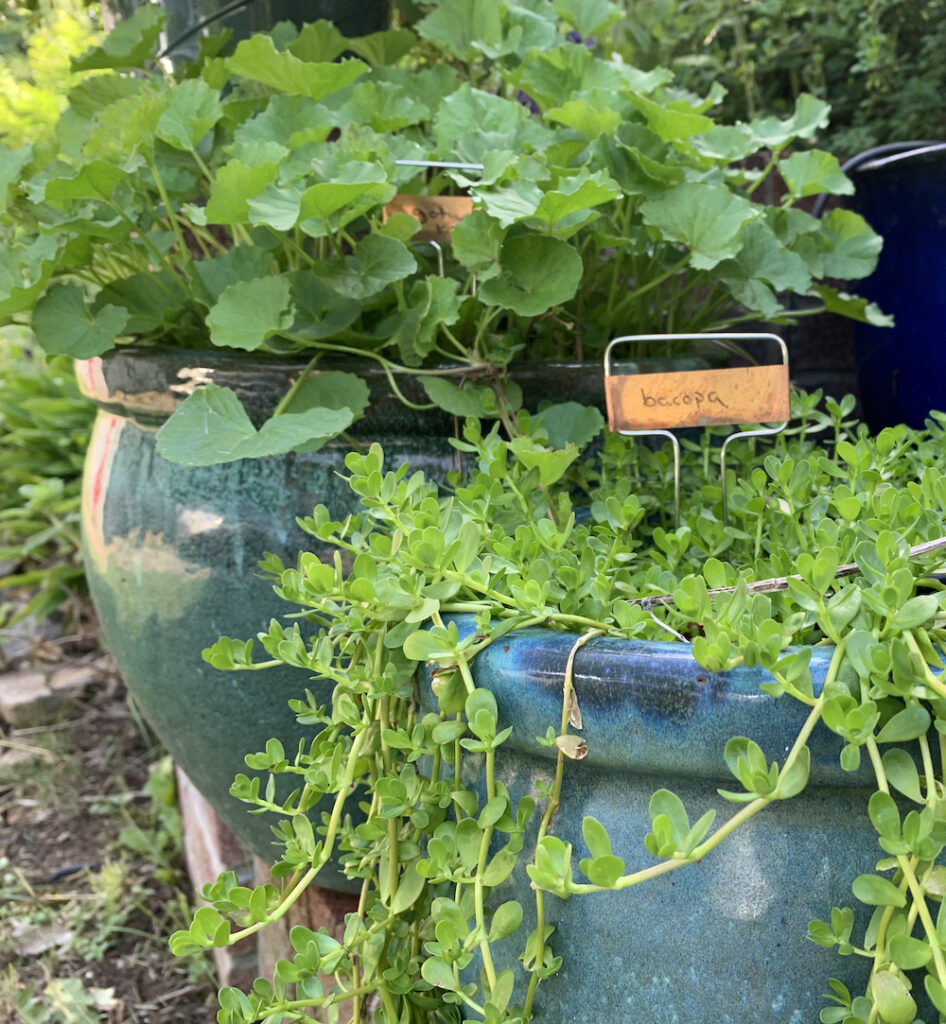
Growing, Harvesting & Buying Gotu Kola
Gotu kola is indigenous to Southeast Asia and India and also grows in other subtropical and tropical areas of the world including Southeastern United States, Polynesian Islands including Hawaii, China, New Zealand, Africa.
Gotu kola grows much like strawberry plants, sending out creeping stolon root runners that can sprout into new plants. This growth looks lovely spilling out of a pot and reminds me a bit of bundles of nerves in the brain. I imagine it growing out into a network to support the healing and connections of the body. The flowers grow from these clusters and are small and inconspicuous. It's extremely difficult to germinate from seed, but once you have plants, they're easy to divide or take cuttings to sprout in water.
Growing gotu kola requires near-daily watering and very rich soil (approximately 100 percent compost). It takes some time to find the perfect spot – not too sunny, not too shady, and as warm as possible. If you’re in zone 8 or warmer, it might survive the year outdoors, preferably in moist, rich soil in dappled sun, though it may tolerate full sun. I have tried hanging mine to protect them from roving, hungry woodchucks, but this requires even more attention to soil nutrition and water needs and may limit its ability to spread and produce lots of medicine. Lately I grow it in large non-pourous plastic and glazed ceramic pots with either timed drip irrigation or water bottles in terra cotta "plant nanny" stakes plus regular throough drenching. This is one of the few plants that would be happy with "wet feet," sitting in a dish to allow for more water-logged soil. I hear it will also grow well creeping around outdoors as long as it has rich, moist soil, preferably not too sunny, and limited competition... since I am mostly full sun sandy acidic pine forest with lot of competitive plants, that doesn't work for me. I can more easily create its "happy space" and bring it indoors in winter in large pots. It can get cranky indoors in winter if it's not warm and moist but will usually bounce back as the temps warm, nutrition and moisture increase, especially after a heavy haircut.
When harvesting gotu kola, you can use only the leaves and vines, cutting back to the base, or the entire plant (including the root) - I personally stick to aerial parts. Gently brush or wash off any dirt with cold water. You can harvest gotu kola whenever it’s happy and green. It will bounce back from a serious cutting (it thrives with it) as long as you leave some leaves behind and give it some water and nutrient TLC.
The little green leaves taste a bit like celery and watercress and can be nibbled plain, juiced, or incorporated into raw and cooked dishes like other edible greens. When I introduced gotu kola to new students, one of them recalled eating it sautéed with garlic and onions in his native Sri Lanka. When I purchase dried gotu kola (because I never seem to grow enough to meet the needs of my students and clients), I notice that these often have a seaweed-y flavor that my own fresh plants do not have. Perhaps it picks up flavors from the soil and fertilizers?
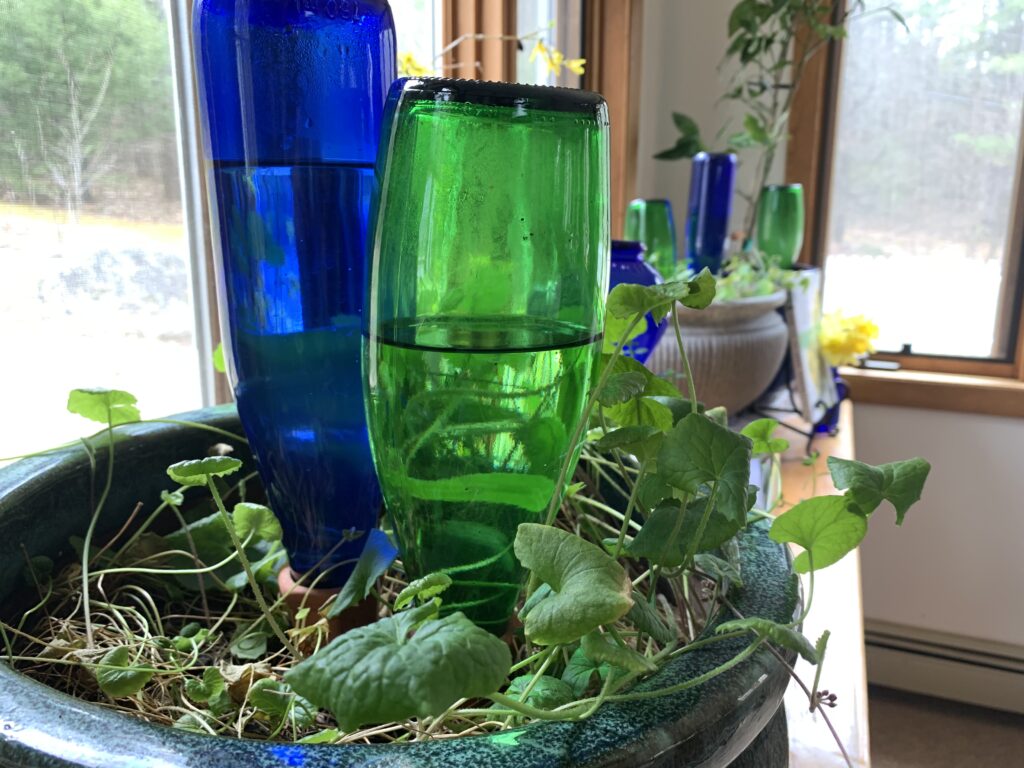
Sourcing Issues & Gotu Kola in Commerce
Quality on the market is varied and questionable. It likes to grow in sewage sludge and can easily take on contaminants like E. coli. My teacher Michael Moore once found a Calcutta race ticket in his batch of India-grown gotu kola, which makes you question the harvest location cleanliness! (Michael Tierra has a similar story, finding a Calcutta train ticket in his gotu kola years ago.) Seek organic gotu kola from suppliers that test their product for contaminants, such as Mountain Rose Herbs and Gaia Herbs. Gaia Herbs and Avena Botanicals are among the few companies that grow their own. If you’re buying gotu kola, note that both bacopa and gotu kola can be called “brahmi.” If you see a plant labeled as “brahmi,” check the Latin name and look for Centella asiatica. Bacopa offers similar brain and anxiety benefits but not the connective tissue and circulation support. David Winston notes that the adaptogenic steroidal saponin centellosides and asiaticosides are more potent in plants grown in a hot climate (such as its native Polynesian Islands and Southeast Asia) - which New Hampshire most decidedly is not, but I still appreciate being able to source it fresh and local in my backyard. Commercially, you may find that Hawaiian- or Sri Lankan-grown gotu kola is superior to the more typical commercial sources, especially if you're able to purchase direct from an organic farm.
Ways to Work with Gotu Kola
Typical herb doses are nice, higher and more food-like doses will be more profoundly medicinal, but it may be hard to source enough good quality gotu kola to consume regularly in large amounts.
Tea: 1 teaspoon/cup, infusion, 1-3 cups daily
larger quantities will be even more profoundly medicinal but I have a hard time sourcing and drinking that much gotu kola - Ayurvedic herbalist KP Khalsa recommends a whole ounce of dried gotu kola brewed as tea daily or reconstituted and cooked in recipes such as Indian saag (along with spinach)
Nice blended with mint, green tea, or holy basil since gotu kola is somewhat bland. It can be added to super infusions as well as simmering broths.
Tincture: 1-4 ml, 1-3 times daily or in formula
You can make it with dry gotu kola (1:5 in 50-60% alcohol), but a fresh 1:2 tincture in 95% organic alcohol feels more vital to me. Note that it may be tricky to get adequate dose in an tincture format, though I do enjoy incorporating it into formulas.
Capsules: follow label directions - extracts may be more potent than crude dried herb pills
Food: Nibble a few leaves or use in larger amounts (1-2 oz daily) as a leafy green, smoothie, juiced.
Maria Noël Groves, RH (AHG), clinical herbalist, runs Wintergreen Botanicals, nestled in the pine forests of New Hampshire. Her business is devoted to education and empowerment via classes, health consultations, and writing with the foundational belief that good health grows in nature. She is the author of Body into Balance: An Herbal Guide to Holistic Self Care and Grow Your Own Herbal Remedies.
The statements made on this blog have not been evaluated by the FDA and are not intended to diagnose, prescribe, recommend, treat, cure, or offer medical advice. Please see your health care practitioner for help regarding choices and to avoid herb-drug interactions.

